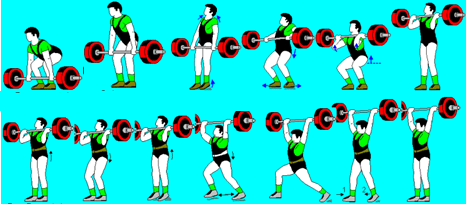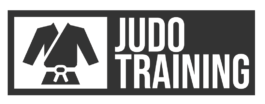Olympic Lifts in Judo
Introduction
Although one of the main principles of judo is to utilize the opponent´s own power to throw him, there is no doubt that at the highest level of performance, it is also is very important to develop the strength of our judokas.
When we are planning the strength training for our athletes we can choose from several different methods. Which exercises we choose to help increase the strength of our athletes depends on the timing during the training season and which stage of their development they are in.
In this article, I will discuss the advantages and disadvantages of using Olympic weightlifting movements for developing strength in Judo athletes.
Although these exercises have been used for many years, nowadays with the growth of Cross Fit, it is common to see them in judo conditioning training routines. Moving away from the latest trends, in this article we will approach these exercises as how the judo coaches can use them to develop their athlete´s strength.

Olympic Lifts
Olympic lifts are the movements in modern weightlifting (clean & jerk, snatch) and the other accessory exercises that are used to progress the training using this technical skill (push press, push jerk, hang clean, hang snatch,…)


Gonzalez Badillo (maybe say who this is, as otherwise it seems confusing why his recommendation is relevant) recommends separating the exercises into two different categories: the location of their effects (local, general or specific) and depends on the velocity they reach the RM (maximum repetition), high or low.
Therefore, Olympic lifts would be considered power exercises with high explosiveness, with a general effect over multiple joints at the same time, using many muscles in a coordinated way, with medium or high transferability to the technical movement.
Regarding the velocity, in these exercises the RM is reached with high velocity, compared with other exercises.
Advantages
Here I will show some of the main advantages of using Olympic lifts for developing the strength of our athletes:
- Within strength training, these are the exercises that develop the most power and explosiveness and allow athletes to generate maximum power. Due to the technical characteristics of these exercises, they must be done quickly, and with significant force production by the unit of time.
- To train with maximum power with this exercise we should train with loads close to 1 RM, which is different compared to other types of exercise, that reach peak power with much lower RM percentages. For that reason, this exercise will allow us to train with heavy loads and with maximum power.
- In the next chart we can see the percentage of 1 RM that different exercises which develop the maximum power for that movement. It shows that the clean and the snatch exercise both reach max power with a percentage of RM higher than 85%.
| Exercises | Speed acceleration (m/s) | % 1 RM | Speed acceleration (m/s) with 1 RM |
| Snatch (n=26)
Clean (n=25) Squat (n=36) Bench press (n=32) |
1,15 (+0,12)
1,09 (+0,1) 0,76 (+0,09) 1,15 (+0,1) |
91 (+5,6)
87 (+6,7) 65 (+7,6) 40 (+5,5) |
1,04 (+0,09)
0,9 (+0,08) 0,31 (+0,07) 0,2(+0,05) |
*Chart 1. Average value of speed acceleration, percentage of 1RM that reach the peak power and speed acceleration with 1 RM in different exercises (González Badillo, J.J., 2000).
- Olympic lifts require the synchronization of different muscle patterns to make a fluid and explosive movement. So these exercises can help us to develop coordination within functional movement. It will challenge the central nervous system, creating temporary movement patterns, and this general capacity can be transferred to the athlete’s specific sport’s movements.
- This exercise starts in a standing position, similar to most of the technical movements in Judo and because it is closer to the actual sport’s movement, it develops preconception and spatial control.
- The Olympic lifts teach the athlete to receive an external force and absorb it. This is critical in sports performance and can help to reduce injuries caused by external forces in Judo.
- Training with these exercises will be a good method to develop the central nervous system and train to recruit fast-twitch muscle fibers with a higher threshold, which normally are difficult to stimulate.
- Training with these exercises will be enjoyable and more motivational than the traditional methods used in strength training.
- Olympic lifts work the triple extension movement, kinetic chain, synchronized them to produce a dynamic movement, as often occur in Judo techniques.
- These exercises are multi-joint movements, so it involves the use of several joints, moving big muscle mass, and with high energetic expenditure.
- Using this exercise, we don’t need to do a long strength training routine to train all muscle groups, so it will save time in our training.
- These technical movements need concentration, focus, speed, and accuracy, all the critical factors in Judo.
- We don’t need expensive equipment or big facilities to do the strength training, and we can also do it in the same facility as Judo, with the possibility to combine some specific tasks with Judogi with these power exercises.
Disadvantages
Despite the great number of advantages theses exercise show, we cannot forget some of the disadvantages:
- Same with other sport skills, these exercises require previous technical knowledge, in this case, can take longer than other conventional exercises, due to the complexity of the technique.
- Specific equipment is necessary to do these exercises. The most important thing is to have the Olympic barbell because doing these exercises with regular barbells can injure the wrist, as the bar might not be able to rotate to follow the wrist’s natural movement. Rubber bumpers and weightlifting platform are also recommended. About athlete’s equipment, although it is not essential, weightlifting shoes can help them improve their technique in some movements.
- Despite several papers that prove that weightlifting does not show more injuries than other sports we cannot forget that professional weightlifters usually have good technical abilities, so they have a lower risk of injury.
Coaches need specific training and knowledge in order to train these exercises correctly.

Recommendations
After seeing the advantages and disadvantages of strength training with Olympic movements here are some advice’s about this type of training:
- We can add these exercises in our sessions with young Judokas, using wood poles or weighted fitness bars while learning the lifting technique.
In the case that coach don’t know the technique of these exercises, we strongly recommend asking for help from a professional or doing an educational course on this topic.
- Do not rush to lift heavy loads. The most important thing is to progress technically and follow the right progressions.
- It is important to have the proper equipment for safety training, and it is important to take care of sports facilities.
You can use devices such as a camera or phone to record your judokas and give them feedback to improve their technique.

Conclusions
Don’t think that these exercises are the only way or the best way to increase the strength of our athletes because it will depend on several factors like the period of the season, age of the judokas, equipment availability, the amount of time available for training, or coaches’ skills. I have discussed the multiple advantages of using this exercise in our strength training sessions to develop power and explosiveness.
The most interesting thing about the Olympic lifts is that we can train with heavy loads with maximal power. In Judo we must throw our opponent who has approximately the same body weight, through a technical movement performed at maximal speed. That means that these exercises are useful to add to our training sessions.
The disadvantages discussed above will not stop us from using these exercises, but we must know their characteristics and minimize the risk of injury.
Recommended Bibliography
For all that want to learn more about this topic, I strongly recommend these books about strength training:
La velocidad de ejecución como referencia para la programación, control y evaluación de entrenamiento de fuerza. González Badillo, J.,Sánchez Medina L., Pareja Blanco, F. y Rodriguez Rosell, D. Ergotech. 2017.
Fundamentos del entrenamiento de la fuerza. Aplicaciones al alto rendimiento deportivo. González Badillo, J.J. y Gorostiaga Ayestarán, E. Inde. 2018. Explosive lifting for sports. Newton, H. Human Kinetics, 2006.

